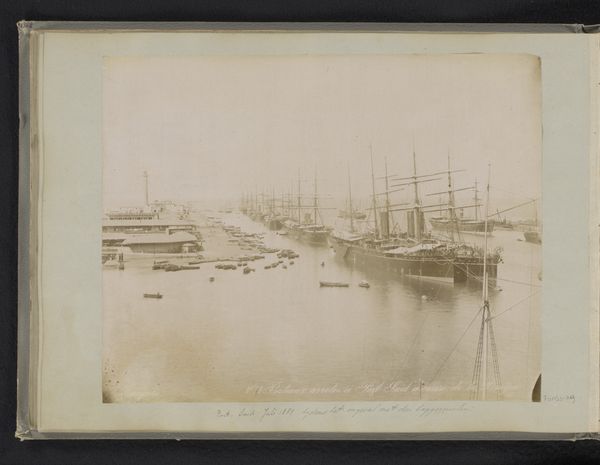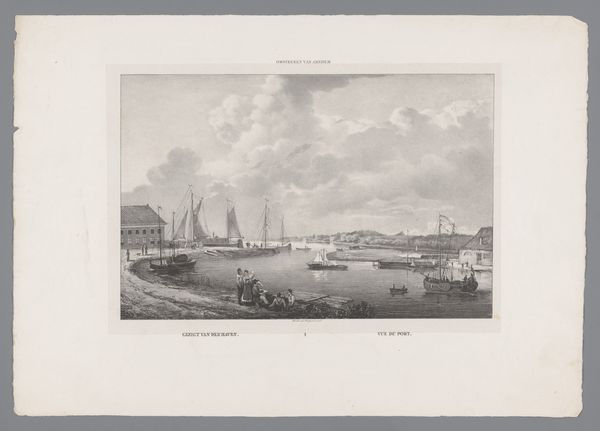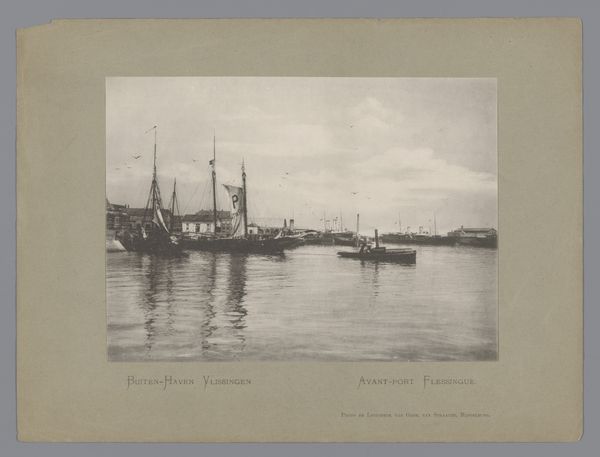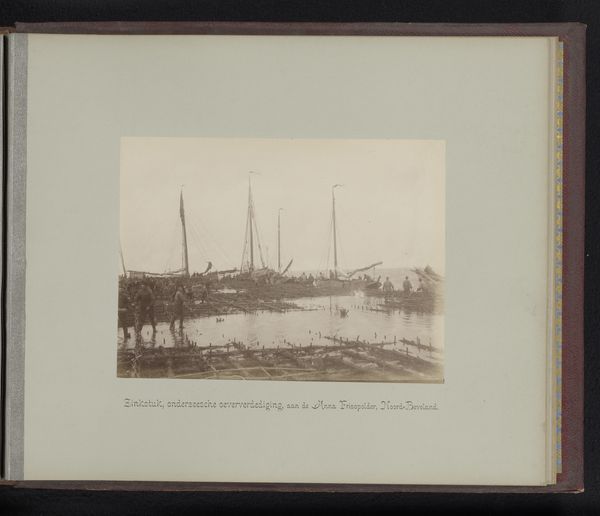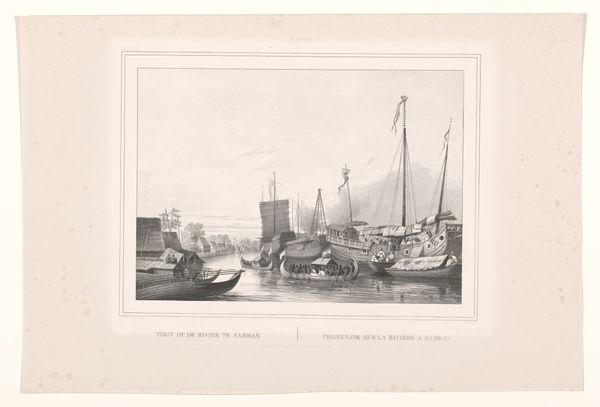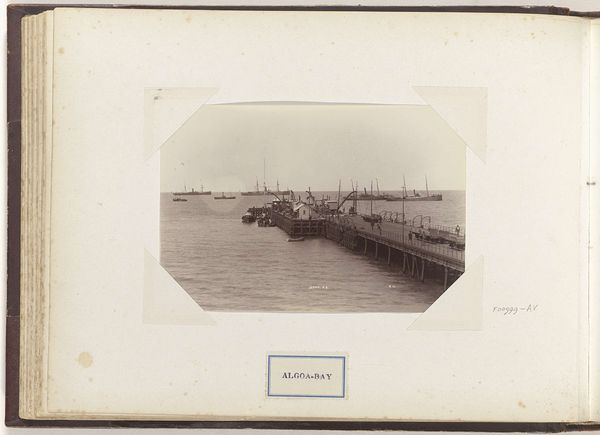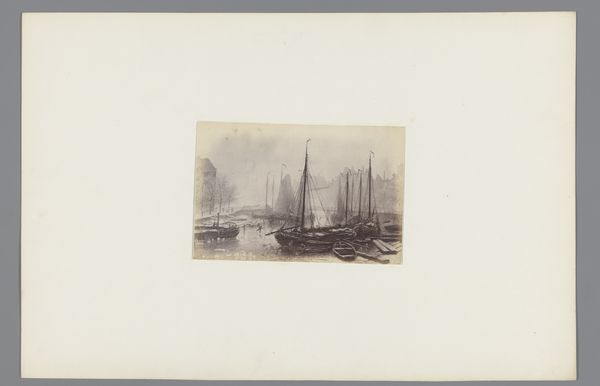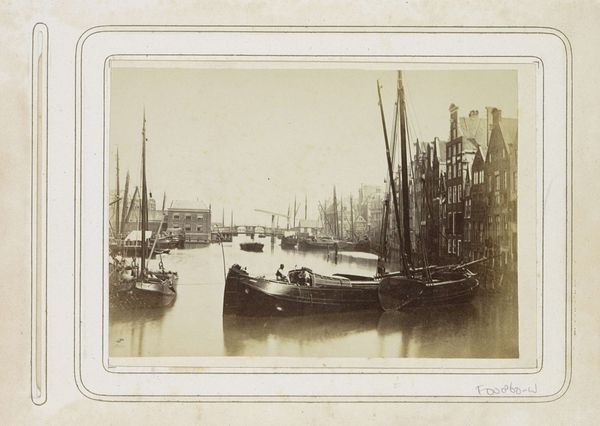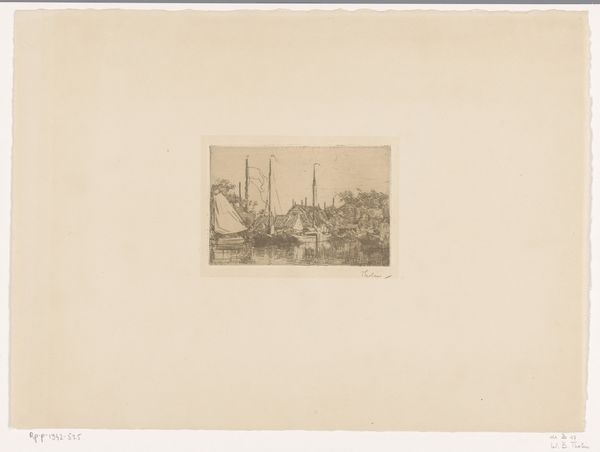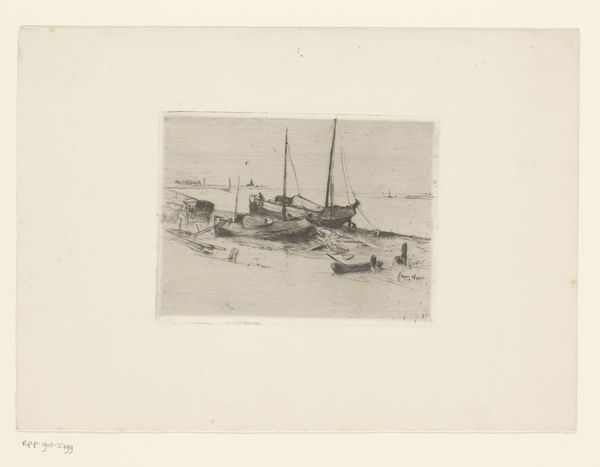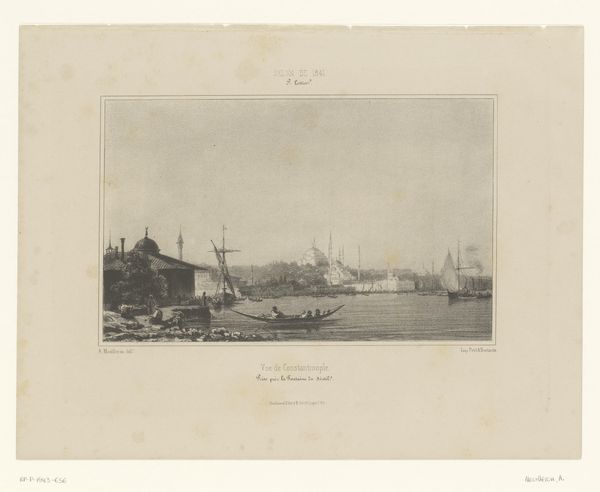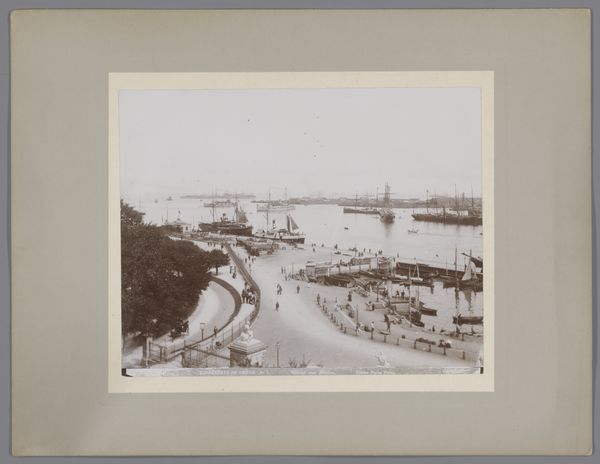
print, photography, gelatin-silver-print
#
pictorialism
# print
#
photography
#
gelatin-silver-print
#
cityscape
#
realism
Dimensions: height 109 mm, width 170 mm
Copyright: Rijks Museum: Open Domain
Curator: Looking at "Gezicht op de haven in Barcelona," a gelatin silver print from before 1890 attributed to Hauser y Menet, I'm immediately drawn into a quiet moment in the bustling history of Barcelona. The image shows the harbour front and has several boats in it of varying size. Editor: The composition is undeniably effective. The repetition of forms—those numerous small boats in the foreground, echoed by the larger ships further out—creates a wonderful sense of depth. It's visually calming, despite the implied activity of a port city. Curator: Exactly. Consider Barcelona in the late 19th century. A burgeoning industrial port, grappling with issues of labor, migration, and class tensions. This image, rendered through pictorialism, with its soft focus, arguably presents an idealized vision of progress, maybe masking those underlying struggles? How does it negotiate the city's social realities through the way the work is rendered? Editor: I see the pictorial style serving a formal function. The diffusion of light softens the harsh realities, emphasizing tonal harmony and creating a unified field. The near monochrome lends a timeless quality that shifts our perception from the concrete to a somewhat sublime and reflective mood. This photograph offers a careful orchestration of tones, from the lightest grey in the sky to the darkest values in the water, giving the artwork both structure and dynamism. Curator: But it's a curated dynamism. This isn’t simply a "realistic" depiction, as the piece is tagged. The image selection here creates a conscious decision to include elements that might resonate differently depending on the viewer's socio-economic position and, perhaps even more crucially, class position in terms of production and reception. A worker versus a merchant viewing it would experience very different responses. The labour inherent in these kinds of landscapes and in building a city would be completely understood by some and obfuscated by others. Editor: A fair point. But without disputing the image’s relationship to those political tensions, let's revisit how the photographer used tonal variation, surface texture and depth of field, among other choices. How are they arranged or placed into a cohesive aesthetic whole, or rather into this gelatin print? It still leads back to the construction of meaning through formal qualities, irrespective of our identities or interpretations. Curator: Perhaps a balanced assessment requires an acknowledgement of both—recognising the photograph's intrinsic elements whilst examining it inside an intertwined framework. This perspective enables a greater appreciation of it within society's continuing progress. Editor: I concede—by synthesizing the material and historical aspects of the scene, we enable an inclusive understanding.
Comments
No comments
Be the first to comment and join the conversation on the ultimate creative platform.
